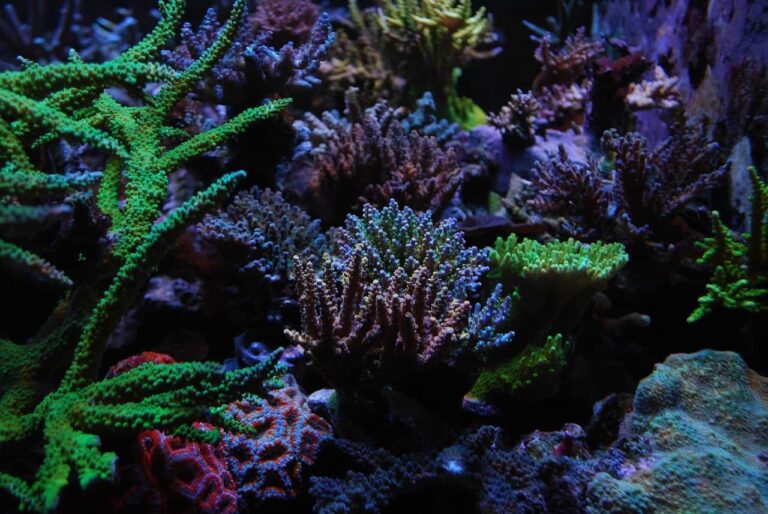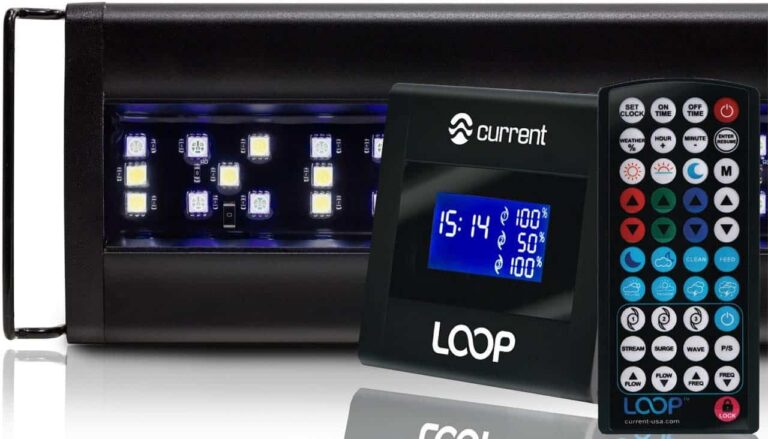Always dreamed of a nice marine aquarium? Don’t know how to get started? Don’t worry. Follow my six-step instruction, and you’ll have a saltwater mix for your reef tank in no time.
But before we jump into the salt-mixing part let us know some important facts and chemistry about sea water. To replicate a piece of ocean inside your house you need to buy a good reef salt that contains all the necessary elements to sustain marine life.
Selecting and buying a salt mix
All in all, this is what you should look for in a marine or reef salt mix:
- Calcium
- Alkalinity
- Magnesium

Calcium is needed to help corals, as well as other invertebrates, build their skeletons. The recommended amount of calcium is 400 PPM – 400 parts per million. I suggest taking a close look at the calcium levels when choosing your mix, since you have to go further lengths reaching this level if it’s not high enough in your salt mix.
Alkalinity is a way of measuring how much bicarbonate you have in your tank. Bicarbonate is needed for coral growth. Alkalinity should be in between 8-11 dkH.
Magnesium is needed to balance the alkalinity of your saltwater. It’s easily found in the right concentration in salt mixes, but still important to check up. The recommended level is anywhere between 1250 and 1440 PPM.
These three components are usually what differs between the mixes. They are minerals naturally found in saltwater, and needed for your tank as well.
How much salt per gallon for Marine aquarium
It’s important to know how much salt you need to each gallon of water to get the right salinity levels. Most manufacturers put a recommendation on their labels, but I’ll throw it out there anyway:
35 PPM – that’s the ideal salinity level for your saltwater aquarium. In case you measure in gravity, then you want to aim for specific gravity 1.025. This is the natural level of salt in seawater, and therefore what I recommend.

Decide on your water source
Your choice of salt mix is crucial, so is your water source. Tap water might work in some cases, but I say you should use purified water:
- Reverse osmosis water (RO-water)
- Deionized water (DI-water)
You can buy this at aquarium stores, but you can also make it yourself. I recommend one of the following three processes:
Of the three listed above, I’d go with the ion-exchange system. It is the most efficient and cheapest way to produce water for your marine aquarium. It might not give you as pure water as RO-systems or DI-systems, but it’s more than enough for your aquarium.
Gather all necessary equipment
Now you need to make sure you have all the equipment you need:
- A clean bin or container
- An aquarium heater, submersible
- A water pump, or submersible power head
- A refractometer, or hydrometer – to measure the gravity contra salinity of your water
- A thermometer, suited for water
- A stirring tool
Once you have all the tools listed above, you’re ready to start mixing!
Mixing The Salt: Step by Step Guide
Let’s checkout a video first –
Step 1: Use warm water and a power head
- Rinse
First of all, make sure you rinse your container thoroughly to get rid of anything that may spoil your saltwater – using only water! Detergents can leave traces of substances that can harm the life of your aquarium.
- Fill your container and place a thermometer
Check the size of your aquarium, and fill your container with that amount of your water of choice. Avoid filling it all the way to the top, since you’ll need the empty space.
- Put the power head and heater in the container
This helps dissolve the salt faster. The ideal temperature for fish tanks is 72-80 degrees Fahrenheit, but if you’re mixing for a reef tank I’d say 75-78 degrees Fahrenheit. You should use the same temperature in your container as your aquarium will be. Make sure to check the power head is making some kind of turbulence on the surface. If not, reposition until it does, to ensure maximum gas exchange.
- Add the salt mix
Follow the instructions on the label for your chosen salt mix. Once you know how much to put in, I recommend that you divide it into three parts. Slowly add the first part while stirring until completely dissolved. Repeat for each part.
Step 2: Use a hydrometer/refractometer to check salinity
If you use a hydrometer, the specific gravity should be 1.020-1.025. If you use a refractometer, the salinity should be 35 PPM. If your readings are lower than 1.020 or 35 PPM, add salt. If higher than recommended levels, add water.
Step 3: Let sit over night
Let the saltwater sit for 24 hours, before adding it your tank. This is an important step, because it ensures the salt has dissolved. Since you’ll leave the power head in the container, it will help your water find a proper balance between oxygen and carbon dioxide.
Step 4: Recheck salinity
After 24 hours, recheck salinity. If the levels are 1.020-1.025, or 35 PPM, you’re good. If not, you need to adjust – add salt if the levels are lower, or add purified water if it’s higher, until you reach the right levels.
Step 5: Check the temperature
After you have made sure the salinity is correct, check the temperature. Keep heating if it’s too low, or remove the heater until right temperature. I said it before, but I’ll say it again – for fish-only aquariums keep a temperature at 72-80 degrees Fahrenheit, for reef aquariums I say 75-78 degrees Fahrenheit.
Step 6: Pour the saltwater into your tank
Final step! It’s time to pour the saltwater mixture into your tank. Make sure to pour it in slowly. I recommend that you check the salinity and temperature again before adding your fish, just to be safe.
Conclusion
First, chose a marine or reef salt mix and check for the three most important compounds: calcium, alkalinity and magnesium. Second, how much salt per gallon is usually specified on the label, but the salinity should be at the specific gravity 1.025, or 35 PPM. Make sure you have the necessary equipment before mixing. Follow step 1 through step 6 and you’ll have your very own marine/reef aquarium in no time!






